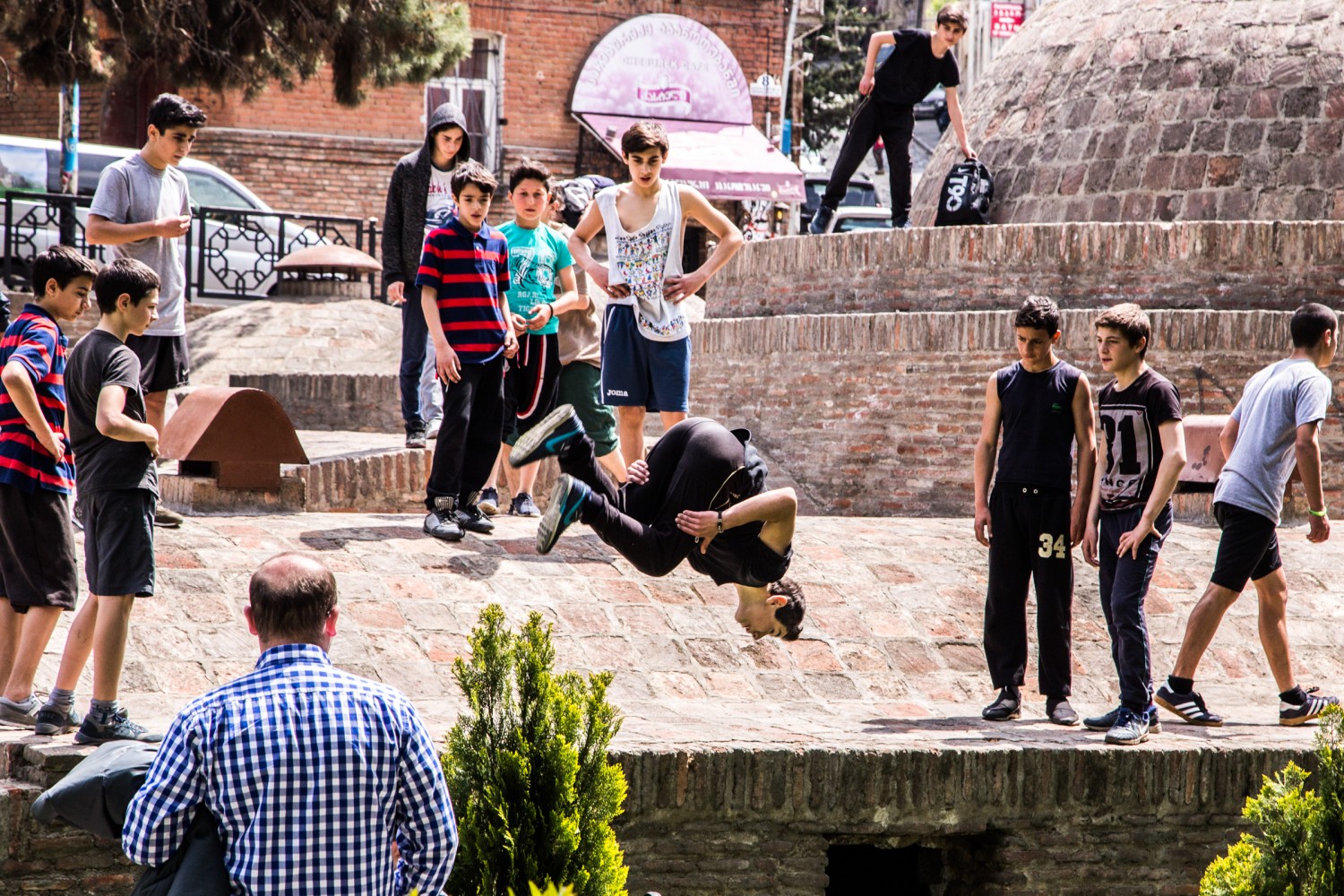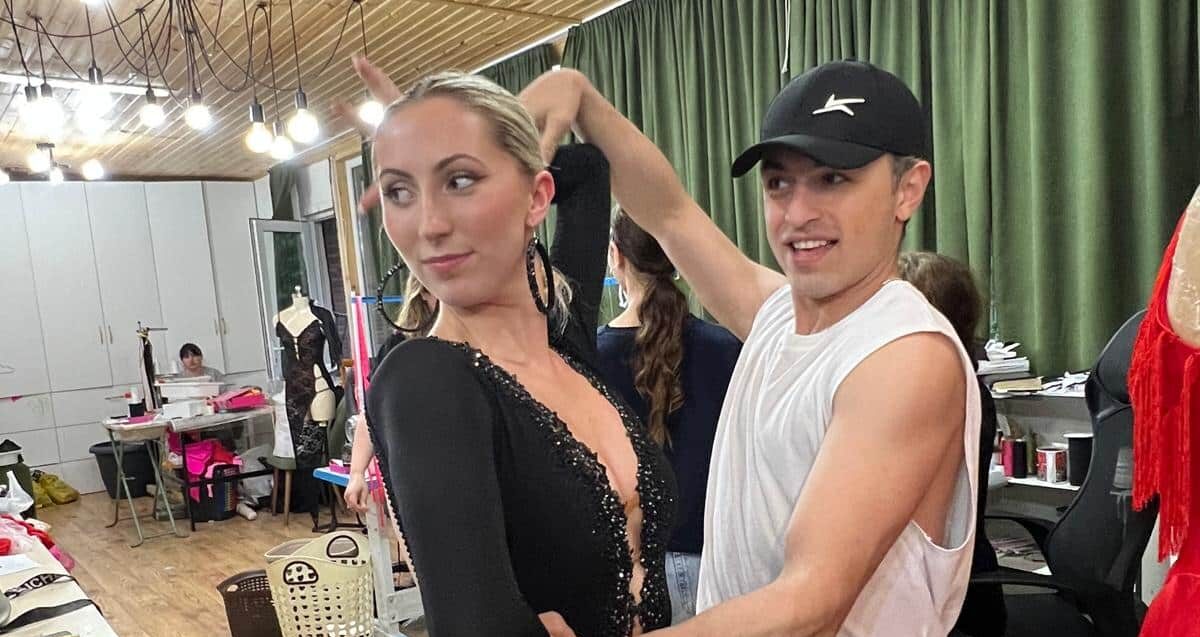Mtirala National Park is a vast rainforest between the Black Sea and the Adjara Mountains. The surrounding mountain areas in the Greater and Lesser Caucasus create an environment prone to severe humidity. The name “Mtirala” means “to cry” in Georgian and is derived from the annual rainfall of 4-4.5 meters. Not only is this one of the most humid regions in Georgia, it is one of the wettest areas of the former Soviet Union. In 2021, it was added to the UNESCO World Heritage List for Colchic Rainforests and Wetlands.
Planning a Camping Trip to Mtirala
As my classmate was flipping through tourist brochures during class break, she came across Mtirala National Park. Our faces both lit up at the idea of organizing a group trip. I suggested the idea to six other students from our gym group, and they were all enthusiastic about joining. With five days to spare, we went to a nearby hunting supplies store and bought two tents. My peer language coach recommended a particular driver, so I messaged him on WhatsApp and secured the transport. The cost per person after splitting ended up being just 50 lari (~$16.50), both ways included. On Friday evening, we bought snacks and water at a local supermarket.
The Drive to Mtirala National Park
Bright and early Saturday morning, eight of us were set to leave Batumi. Of course, there was an alarm clock that did not go off which left one of the students scrambling to make it on time. I sat in the front and conversed with our driver, Guram, in Russian on the way over. He was incredibly friendly, and it was a great way to practice my Russian conversational skills. About half-way to Mtirala, our car popped a tire. What a way to start the journey! We nonetheless finally arrived at the national park after a total of 1.5 hours. The park rangers checked our passports and assigned us to a small camping area, and we paid the 10 lari fee.
In the Rain Forests of Mtirala
The rangers immediately had us zipline upon arrival, no questions asked. The zipline is 220m, consists of three legs, and costs only 50 lari (~$16.50) each.
After the zipline, Guram drew us a map of the park trail on a piece of paper, showing the path to the lake, waterfall, and picnic area where we could set up our tents. We thanked and said goodbye to him, and then our journey began. We crossed the river on a cable carriage bridge that cost 10 lari total for us all. Once we reached the other side, we started hiking the trail. Only 15 minutes later and it began to rain. We continued walking…and walking…and walking. The trail seemed endless. More than three times we thought we had gotten lost because we could not find the lake.
Another fork in the road later and we finally reached the lake. We sat down under the covered table and bench to munch on snacks and discuss random topics. We also climbed over the rocks by the lake and took pictures. After realizing that we now had to hike back uphill, we pulled ourselves together and continued onward. We almost got lost again on our way to the waterfall despite our hand-drawn map. The highlight of that trail was seeing a unique blue-gray slug with scales. The waterfall was astounding, and the mist brought a much needed drop in temperature. Until then, we were drenched in sweat from the heat and humidity.
We were exhausted, but we only had the picnic area to reach next. The next fork in the road caused us great confusion. We stuck with our intuition, but it meant more uphill hiking. When we reached the picnic area, we all let out a sigh of relief. Despite it feeling like evening because of how tired we were, it was only 16:00, so we had plenty of time to spend. This was an easy task for eight 20-year-olds in the middle of nowhere. We played some old American classics on our mini speaker, laughed and made jokes, had more snacks, and finally resorted to setting up the tents.
Two hours later, we headed downhill to the visitor’s center near the zipline to eat dinner. Because the trail was a loop, we simply continued it and got down in 30-40 minutes rather than 2-3 hours. So, for those less adventurous, it is possible to hike straight to the campsite on a much easier trail. But one would miss the lake and waterfall, and those make the experience memorable!
On our way to the center, it began raining again. Unfortunately for us, we had not learned in advance that Mtirala is one of the wettest places in Georgia, so we were very underprepared in terms of raingear. We threw our hands in the air and continued down the trail anyway; our rationale was that we had already started walking. The downpour grew stronger, and by the time we reached the carriage bridge, it was as if a bucket was being poured from the sky. We crossed the river and got to the restaurant, utterly drenched and famished. Dinner was Caesar salad with chicken, kebab, and margarita and vegetable pizzas. Then, as we watched the rain grow stronger through the restaurant windows, we realized that we had no clue whether our tents were waterproof or not. To make it worse, we had no tarps. We were convinced that our tents would collapse under the heavy rainfall. It felt so crazy to imagine our tents flooding that all we could do was break down laughing.
We tried to hurry back once the rain stopped, but our quads and calves were not happy about the uphill trail. The only motivation to keep going was the curiosity to see if our tents survived. The hike felt much longer than it should have. When we reached our campsite, the tents were – anticlimactically – still standing with barely any water inside.
Around 22:00, we went to bed. We were laying down, packed tightly together, like sardines in a can, as the rain pattered down on our tents. At first, we tried to give each other personal space, at least as much as was feasibly possible. But an hour in, we were staying as close as possible to each other in an effort to keep warm. It was no more than 12 degrees Celsius, and with no sleeping bags, no blankets, and only a thin tent between the ground and us, our only source of heat was each other.
Breakfast and the Trip Back
We woke up at 8:00 to our sides in pain. Breakfast consisted of rice cakes, bread, peanut butter, and salami that we had brought with us. Then, again, it started to rain. We realized that we had no choice but to start packing if we were to make it down to the visitor’s center in time to meet our driver for the trip home.
In the pouring rain, we took down the tents and gathered all our trash from the previous night. Since my umbrella was in use by another student, I resorted to making a makeshift “raincoat” from the thin bed sheet I had wrapped myself in overnight. We showed up to the restaurant a second time drenched, except this time looking even more tired. We had a quick coffee before our driver returned and drove us back home to Batumi. Looking back, we can agree that Mtirala was a wild and recommendable experience, but we recommend any future travelers to better prepare for the rain and chilly nights!
You Might Also Like

SRAS Guide to Living in Tbilisi
What’s it really like to live in Tbilisi for a semester? Staying long-term in a city is much different from just vacationing there. You’ll need to navigate more of the practical, everyday services of the city. You will also need to budget for more miscellaneous and long-term expenses. Thus, this guide covers everything from haircuts […]

Spring Break: Georgia Program Review
Over about one week in early March, SRAS students experience Georgian history, culture, and food. The Spring Break: Georgia program offers a unique opportunity to explore Georgia while meaningfully engaging with locals and building intercultural skills. Read below the experiences of real students who have attended this short but transformative study abroad program! Ian […]

Preparing for and Coping with Culture Shock
Some of our students report not feeling culture shock at all. Some are surprised by how much culture shock they experience. Often, those most affected are those who did not expect it. So how can you prepare to live in a new culture and get the most out of the experience? How do you prepare […]

International Airfare For Study Abroad
SRAS is not in the business of selling plane tickets, with the exception of group educational tours and domestic flights not available for purchase outside of our program host countries. We do, however, continuously monitor flight pricing and travel logistics routings for our study destinations and we travel a lot ourselves. As such, we are […]

Ballroom and Latin Dancing in Georgia
In my six years as a competitive ballroom dancer in the United States, I’ve been struck by the fact that most of my coaches, teachers, and judges are from former Soviet states. Even Ukrainian President Zelensky had a star turn as a dancer when he won a Dancing with the Stars competition in 2006. During […]










